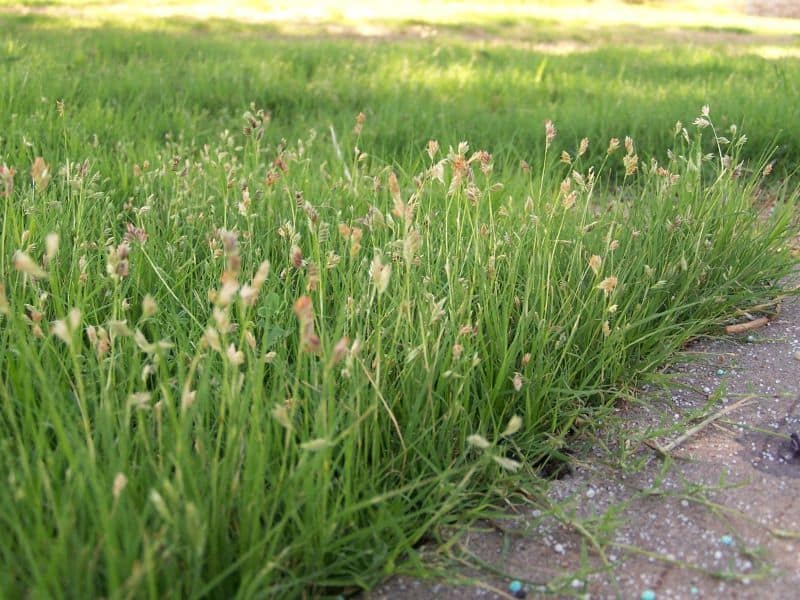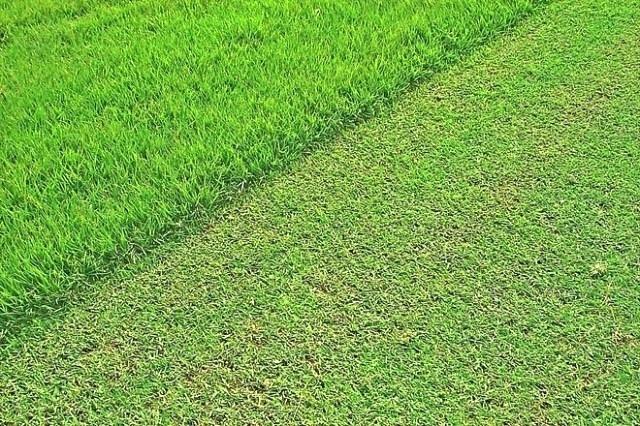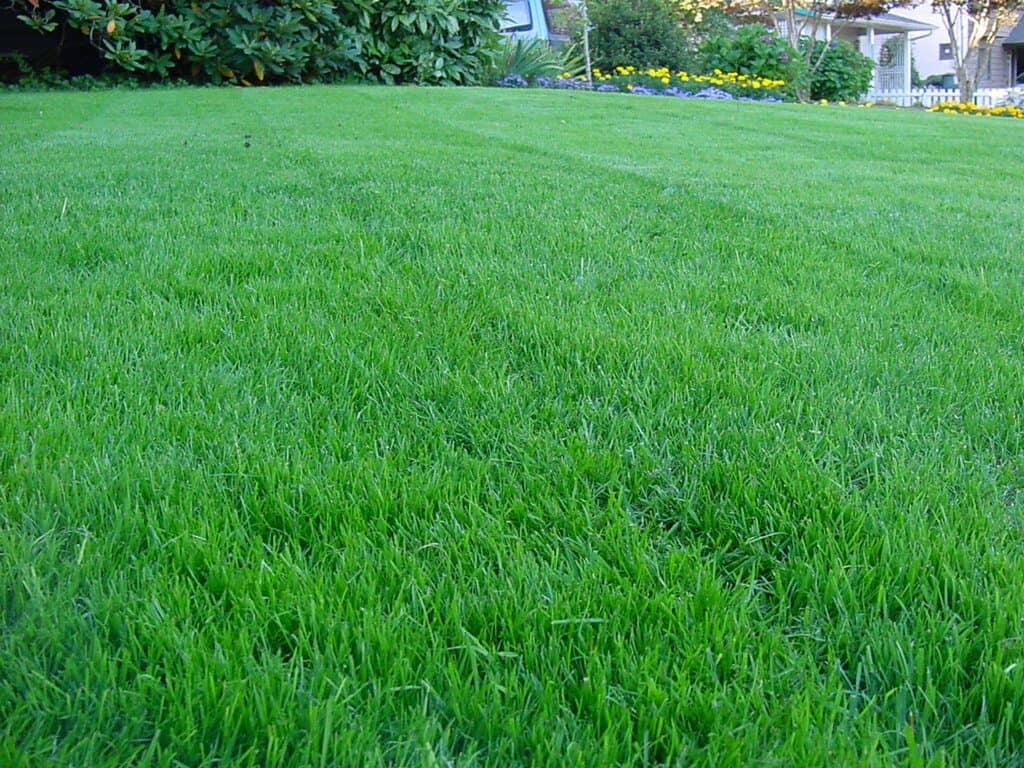Selecting a grass species is the first step in establishing a new lawn. Species vary in their range of adaptation and no one type of grass will thrive in all landscapes.
This variation may occur from one part of the country to another, as well as within the state of Iowa. For best results, avoid past preferences of certain grasses and bias of seed costs when selecting a species. New, improved cultivars of many grass species, possessing improved characteristics, are now available to homeowners. At Nice & Precise Lawn Care we often use SnapBack. The time spent properly selecting a grass species will help prevent problems in the future.
The grass species that is best suited for your lawn will depend on:
- Your location in the state
- Your quality standards
- The amount of maintenance you are willing to provide
- The amount of shade
- How the lawn will be used
For the Best Lawn in Iowa
Weather conditions and the stresses that accompany them can vary depending on your location in the state. Environmental stresses most likely to affect the performance of lawns during the summer months are periods of high temperatures and drought.
In general, the southern third of the state (south of US 34) will experience more prolonged periods of high air temperature and the western half of the state will receive less rainfall. Tall fescue and Kentucky bluegrass are able to handle these conditions better than fine leaf fescues and perennial ryegrass.
During the winter months, low temperature injury can affect the health and survival of grass species the following spring. Generally speaking, winter conditions in Iowa are more severe north of US 20. Perennial ryegrass and newly seeded tall fescue are particularly susceptible to injury caused by low temperatures. As a result, these grass species are generally mixed with Kentucky bluegrass and fine fescue when planted in the northern third of the state.
Quality vs. Maintenance of Your Yard
Everyone has ideas about what a quality lawn should look like. The beautiful, dark green Kentucky bluegrass and perennial ryegrass lawns that are the pride of the neighborhood are also probably the most expensive and time-consuming lawns to maintain. Conversely, tall fescue or fine fescue lawns require less watering, thatch control, and fertilization.
The needs of most homeowners are probably between these two extremes, but balancing maintenance and quality is an individual decision that should be carefully considered. Maintenance levels can be categorized by the amount of mowing, irrigation, and fertilization required in one year and will vary between grass species and among cultivars within a species.
Hybrid Grass Seed for Your Lawn
The newly-improved types of Kentucky bluegrass require medium- to high-maintenance levels of effort. There are several cultivars that have performed well under low maintenance levels, but most require medium- to high-maintenance.
There are also newly improved types of tall fescue that are darker in color, and possess a much finer texture along with weak underground stem system known as rhizomes. The maintenance requirement for these new cultivars is similar to Kentucky bluegrass rather than its older tall fescue counterpart.
Amount of Shade for a Lawn
One of the most frequent causes of lawn deterioration is shade. Grass species differ in their ability to tolerate shade. Most of the grasses listed will grow in slight shade, provided they have at least 4 to 6 hours of full sun per day. Sun during the early morning hours is most important for the health of the grass.
Fine fescue is the most shade tolerant grass for Iowa lawns. Before selecting the grass for your lawn, consider the amount of shade the grass will be subjected to—now and as the trees grow. If fine fescue fails to grow in your shade situation, consider replacing it with shrubs, ground covers, or mulches that are suitable for low light conditions.
Lawn Use
How your lawn is used will have a big influence on the grass you select. If your lawn is used mainly for show, wear resistance may not be an important consideration.
Often, the best choice is a mix of grasses, such as Kentucky bluegrass and perennial ryegrass…
If the lawn has frequent family or neighborhood use, select a grass that will resist wear and recover quickly. Tall fescue and perennial ryegrass are able to tolerate heavy traffic, but are slow to fill in damaged or worn areas. Kentucky bluegrass can handle moderate amounts of traffic and has good recuperative potential. Often, the best choice is a mix of grasses, such as Kentucky bluegrass and perennial ryegrass, both have good wear tolerance and good recuperative ability.
Grass Choices for Iowa Lawns
Cool-season (northern) grasses are primarily planted in Iowa and grow best in the spring and fall. The four cool-season grasses mainly used are:
- Kentucky bluegrass (KBG)
- Tall fescue (TTTF)
- Perennial ryegras
- Fine fescues.
Kentucky Bluegrass
In Iowa, Kentucky bluegrass is the best-adapted grass for lawn use. It is dark-green in color, has a medium texture, and will form a tightly knit, attractive sod due to its ability to spread by underground stems (rhizomes). Common types should be maintained at 2 to 3 inches, but the improved varieties will tolerate lower mowing heights. Kentucky bluegrass has moderate wear resistance, but recovers quickly from damage.
Kentucky bluegrass grows best on heavy, well-drained, fertile soils and will tolerate partial shade. Water requirements are high during the actual growing season, but during hot dry spells, Kentucky bluegrass will escape drought by going dormant and can usually survive 4 to 6 weeks without water. In most cases, it will recover rapidly during the fall when an adequate amount of moisture and cooler temperatures return.
Kentucky bluegrass seed mixtures
Seed mixtures will often contain at least two improved varieties of Kentucky bluegrass. It is very competitive, favoring healthy plant growth over weed development. Overall, tolerance to diseases and cold winter temperatures is good, however, it is susceptible to necrotic ring spot and leaf spot diseases. Improved varieties of bluegrass are more resistant to these diseases than common grass types.
Tall Fescue or Turf Type Tall Fescue
Tall fescue is the most heat, traffic, and drought tolerant of the cool-season grasses, and it also tolerates wet soils. It is well adapted to shady sites and is often used where a low maintenance lawn is desired. Tall fescue will form a deep root system that is tolerant of clay and alkaline soils.
Medium to dark green in color, tall fescue is coarsely textured. It is a bunch-type grass and forms a coarse, clumpy appearance when used alone. The new, improved turf-type varieties are much finer in texture and possess weak rhizomes. Overseeding every few years is recommended for both common and improved types to reduce the clumpy appearance.
Because tall fescue possesses a high-growth rate, frequent mowing will be required as compared to Kentucky bluegrass. When tall fescue is maintained at 3 inches, weeds will rarely be a problem. The improved varieties can handle lower mowing heights, but weeds will likely become a problem. Tall fescue has moderate tolerance of cold temperatures and is suitable for most winters in Iowa. There are few insect and thatch related problems unless the lawn is over-watered or fertilized too much. Tall fescue is very susceptible to brown patch disease, and occasional fungicide treatments may be required. Overall, the new turf-type tall fescues offer a great low-maintenance alternative to Kentucky bluegrass, and are recommended for use across central and southern Iowa in non-irrigated situations.
Perennial Ryegrass
Perennial ryegrass is a bunch-type grass (lacking any stolons or rhizomes) that is used in seed mixtures primarily because of its ability to germinate and establish quickly. It is medium to coarse in texture, and possesses the darkest green color of the coolseason grasses. Perennial ryegrass can tolerate partial shade, grows well on a wide range of soils, and has good tolerance of wet soils. It should be maintained at a mowing height of 1.5 to 2.5 inches mowing height range.
Perennial ryegrass does not tolerate extremes in temperature, especially low temperatures; therefore it is not generally recommended for pure stands in Iowa. However, because of its exceptional durability and rapid establishment, improved varieties are often blended with Kentucky bluegrass to provide a wear-resistant turf on heavily used areas.
Fine Leaf Fescues
Fine fescue is the general name given to a group of fescue grass species characterized by having very fine leaf texture.
This group of grass species includes
- creeping red fescue
- chewings fescue
- hard fescue
- sheep fescue.
Creeping red and chewings fescues are often used in blends for shaded conditions. They are superior to most cool-season grasses in shade adaptation and compatible in mixes with Kentucky bluegrass. Like perennial ryegrass, fine fescues germinate and establish quickly.
These fine-leaf textured fescues form a lawn of high shoot density, are medium to dark green in color, and some may spread by rhizomes. The fine fescues have good drought tolerance, but may lose their color rapidly during periods of hot, dry weather. They should be mowed regularly to a height of 1.5 to 2.5 inches, and will respond well under a low fertilization program.
The fine fescues are known for their ability to tolerate shady areas as well as their low water and fertility needs. They do not handle wet soils or heat well, and are often mixed with Kentucky bluegrass and/or perennial ryegrass in areas that receive both sun and shade. The ability of the fine fescues to handle traffic is poor.
The ability of the fine fescues to handle traffic is poor.
Alternative Grass Species for a Nice Lawn
Although cool-season grasses are best adapted for Iowa lawns, no one type of grass is best suited for all situations. Several less common, alternative grasses may fit a niche for low maintenance needs and other special sites. Warm-season (southern) grass species such as buffalograss and zoysiagrass may be beneficial in specific situations, although these species are best suited to the warmer regions of the United States and are generally not recommended for home lawn use in Iowa.
Buffalograss
Buffalograss is a fine-textured grass that requires very little water, fertilizer, or mowing. It can handle extreme hot and cold temperatures and high pH soils, but grows poorly in shade. Buffalograss can tolerate moderate traffic and the spreading surface runners known as stolons, allow this species to quickly fill damaged areas.
Historically, buffalograss has been utilized as an important rangeland grass for grazing animals. Because buffalograss is a warm-season species, it is slow to green up in the spring, and will begin to go dormant and lose its green color after the first frost. Buffalograss is used in Iowa, and often appears in low-maintenance landscape areas along roadsides and city streets. However, with the recent development of turf-type species, buffalograss is now being considered for use as a low-maintenance species for certain lawn situations.
Buffalograss may be established from seed, vegetatively by sodding, or by sprigging or plugging of stolons. The utilization of buffalograss seed has been hampered by poor germination due to seed-coat-induced dormancy imposed by a tough outer covering (bur) surrounding the seed. Seed that has been removed from the bur is available and will readily germinate.
The best time to establish buffalograss from seed in Iowa is around June 1.
Buffalograss can provide acceptable lawn quality conditions with minimal mowing. If left unmowed, buffalograss will grow to a height of 8 to 10 inches. Mowing heights of 2 to 3 inches are recommended. The grass will be mowed shorter when irrigated and more frequent mowing may be required. Minimal fertilization may be used. Avoid applying more than
2 pounds of nitrogen per 1,000 square feet per year.
Zoysiagrass
Zoysiagrass is a medium textured grass that forms a dense, high-quality lawn with excellent heat and drought tolerance. It has few problems with insects and diseases, and can tolerate partial shade or full sun.
This grass prefers air temperatures between 80˚F to 95˚F. It’s very tolerant of cold temperatures and is used occasionally in southern Iowa although it has a shorter growing season. It is slow to green up in the spring, and will go dormant after the first frost. If year-round color is not a high priority lawn zoysiagrass can be used as an alternative, low-maintenance, grass
for nice lawns.
Zoysiagrass has traditionally been established by sodding, stolonizing, or plugging and the hassle of vegetative establishment has prevented some people from utilizing this species. Establishing zoysiagrass by seed is hampered by poor germination due to a dormancy factor. Most Zoysiagrass seed that has been chemically treated in order to break dormancy is available, although establishment is slow and can take at least one full growing season.
When to plant Zoysiagrass?
It should be seeded around the first of June 1 in Iowa. Another nice traight of Zoysiagrass is that it requires low- to medium-maintenance. It has a slow growth rate, and handles traffic well when actively growing during the hot summer months. The stolons and rhizomes allow the plant to self-repair damaged areas. Zoysiagrass is very tolerant of drought and irrigation is only necessary to prevent it from going dormant. Sharp mower blades are necessary when mowing zoysiagrass because of the stiff leaf blades. Mowing heights between 1 and 2 inches are recommended. The nitrogen fertility requirement ranges from 0.5 to 1 pound of nitrogen per 1,000 square feet each month the grass is growing. Zoysiagrass will require periodic thinning or dethatching for the best appearance.
Strategies for the Best Iowa Lawns
Lawns with minimal shade
– use 100% Kentucky bluegrass or tall fescue for lawns receiving full sun. Choose a seed mixture that contains two or more improved cultivars of Kentucky bluegrass. Often, because Kentucky bluegrass may be slow to establish from seed, 20% to 50% perennial ryegrass may be included in the mixture to increase establishment speed. Kentucky bluegrass should not be seeded in the spring. The weather in spring 2014 was great for bluegrass seeding, however this is a rarity and it is not advisable to seed Kentucky bluegrass in the spring.
Lawns with sun and shade
– use a mixture of Kentucky bluegrass (80%), perennial ryegrass (10%), and fine fescue (10%). Kentucky bluegrass will dominate in full sun areas, perennial ryegrass will provide quick cover and will grow in both sun and shade, and the fine fescues will thrive in the shaded portions of the lawn.
Difficult shade areas where other grasses have failed
– use 100% fine fescue. If fine fescue struggles or fails to grow, substitute shrubs, ground covers, or mulch.
Repairing a damaged lawn
– weak areas of the lawn with less than 50% grass cover can be renovated by overseeding and incorporating the seed into the soil. Use a mixture of perennial ryegrass (20%) and additional grass species (80%) that will tolerate the site characteristics. Another renovation method is to remove all vegetation with a nonselective herbicide and start over.
The best lawn care service in central Iowa
When you’re ready for the best lawn in the neighborhood call or email Nice & Precise Lawn Care for a free, no obligation quote.





Like!! Great article post.Really thank you! Really Cool.